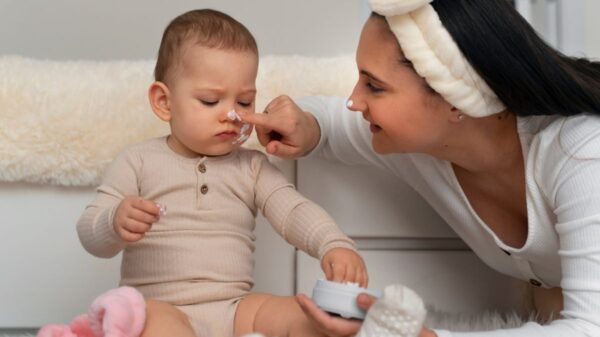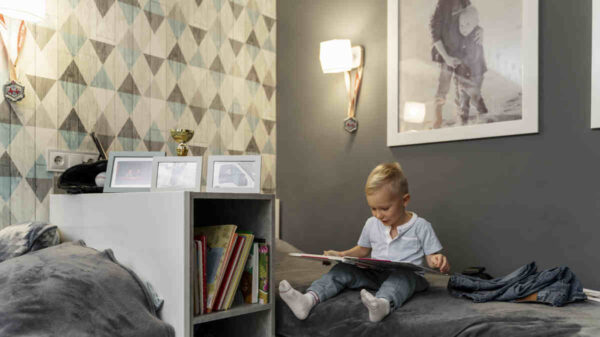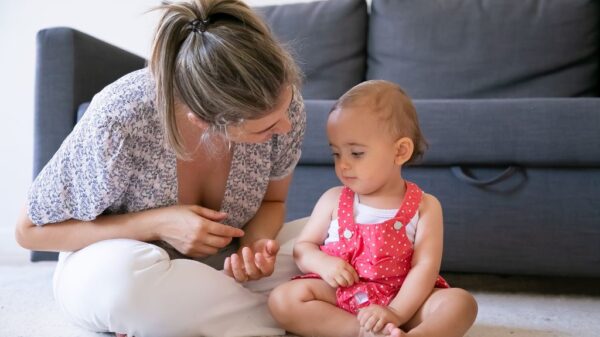Ensuring your baby gets enough sleep is crucial for their development and your own well-being. However, getting a newborn to sleep in their bassinet can be a challenge. Here’s a comprehensive guide on how to help your baby sleep comfortably in their bassinet, covering everything from understanding baby sleep safety to practical strategies you can implement.
Baby Sleep Safety
Before delving into techniques to help your baby sleep in a bassinet, it’s essential to prioritize their safety. The American Academy of Pediatrics recommends that newborns sleep in the same room as their parent or caregiver but on a separate sleep surface for the first six months. This could be a bassinet or crib placed in your bedroom or another shared room. Always remember these safety guidelines:
- Place your baby on their back to sleep.
- Use a separate sleep surface such as a bassinet or crib.
- Keep the sleep environment free of loose bedding, pillows, and other items.
- Ensure the mattress is firm and fits snugly in the bassinet or crib.
- Keep the room at a comfortable temperature and avoid overheating.
Understanding Why Your Baby Isn’t Sleeping
There are various reasons why your newborn may resist sleeping in their bassinet. It’s crucial to identify these factors to address them effectively. Some common reasons include discomfort, environmental factors, startle reflex, being used to sleeping in your arms, unmet basic needs, and acid reflux.
Ways to Help Your Baby Sleep in Their Bassinet
Here’s a brief explanation of each topic:
Learn Your Baby’s Wake Windows
Newborns can only stay awake for short periods before needing to nap again. By understanding these wake windows, you can schedule sleep times that align with your baby’s natural sleep patterns, promoting better and more restful sleep.
Establish a Routine
Creating a consistent bedtime routine helps signal to your baby that it’s time to sleep. This can include activities like playing soothing music, singing a lullaby, or reading a bedtime story. Consistency is key to helping your baby associate these cues with sleep.
Adjust the Sleeping Environment
Minor adjustments to the sleep environment can make a big difference in your baby’s comfort. This includes controlling the temperature to ensure it’s neither too hot nor too cold, using white noise or soothing sounds to mask external noises, keeping the room dimly lit for sleep, and ensuring there are no strong or distracting smells in the sleep space.
Lay Your Baby Down Drowsy
Placing your baby in the bassinet when they are drowsy but still awake can help them learn to self-soothe and fall asleep independently. This reduces the likelihood of the startle reflex waking them up as they transition from your arms to the bassinet.
Be an Observer
It’s important to observe your baby’s sleep patterns and behaviors. Instead of immediately picking them up at the first cry, give them a moment to self-soothe. If needed, provide gentle soothing from the bassinet before resorting to picking them up.
Plan Feeding Times
Establishing a feeding routine that considers your baby’s wake windows and sleep times can help prevent them from being too hungry or too full at bedtime. This balance ensures that your baby is comfortable and ready for sleep without disruptions from hunger or discomfort.
Choosing the Right Bassinet
Selecting a suitable bassinet is crucial for your baby’s comfort and safety. Look for a high-quality bassinet that is sturdy, portable, breathable, and easy to clean. The Boppy Bassinet is an excellent choice for infants under 20 pounds, offering convenience and comfort for both you and your baby.
Conclusion
Helping your baby sleep in their bassinet involves understanding their needs, creating a conducive sleep environment, establishing routines, and choosing the right sleep surface. By following these strategies, you can promote better sleep for your newborn and yourself.











